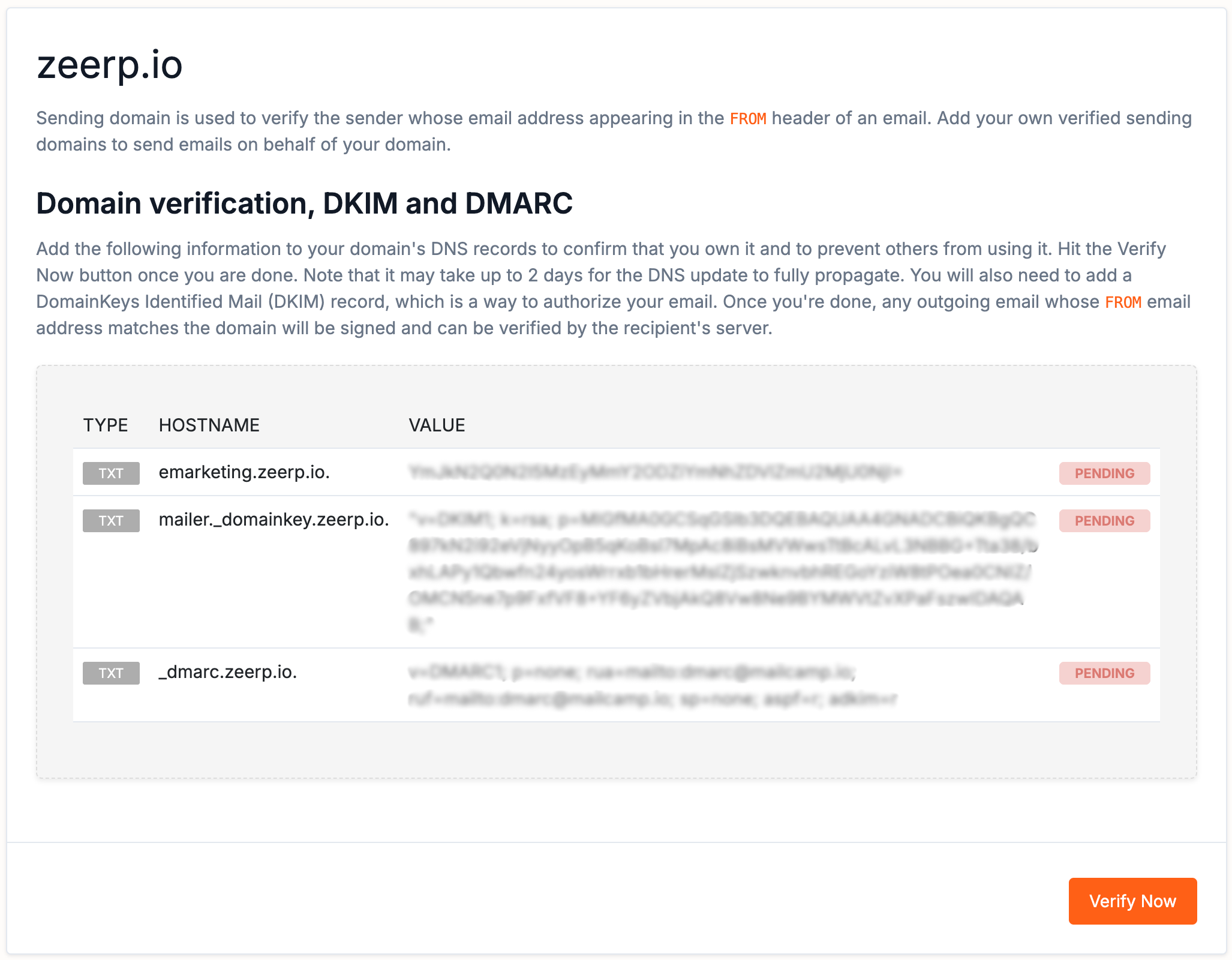Comply with Gmail and Yahoo's requirements for email senders
Starting February 1, 2024, Gmail and Yahoo introduced updated standards for email senders to enhance inbox protection against spam while ensuring the delivery of legitimate messages. It's expected that other providers in the industry will adopt similar measures soon. As such, complying with these requirements is essential for all email senders.
In this article, we’ll outline the new guidelines set by Gmail and Yahoo and provide actionable steps to help you meet these standards for All email senders.
| Requirements | Actions to take |
| Send from your own domain (not @gmail, @yahoo, or @orange) | Get a custom domain and set up your professional email address through a service such as GoDaddy or Namecheap. |
| Authenticate your domain with DKIM and DMARC | Add the Mailcamp code, DKIM record, and DMARC record to your domain. |
| Stay under a 0.3% spam complaint rate | Follow our best practices for email deliverability and use Gmail's Postmaster Tools to monitor your spam complaint rate. |
What all senders should do

Send from your own domain (not @gmail, @yahoo, or @orange)
Using a free email provider like @gmail, @yahoo, or @orange often results in your messages landing in the recipient's spam folder.
To improve email deliverability, consider acquiring a custom domain (if you don't already have one) and setting up a professional email address using services like GoDaddy or Namecheap. This not only enhances the credibility and recognizability of your communications but also increases the likelihood of your emails reaching the intended inbox.
For more information, check out our upcoming article: "Why Upgrading to a Professional Email Address is Essential."
Authenticate your domain with DKIM and DMARC
DKIM and DMARC are essential email authentication protocols designed to minimize the risks associated with spam, phishing, and other harmful activities. Implementing these methods also improves the chances of your emails being successfully delivered to your recipients' inboxes.
For a step-by-step guide on configuring DKIM and/or DMARC for your domain, refer to our upcoming comprehensive article, Authenticate Your Domain with Mailcamp (Mailcamp code, DKIM record, DMARC record).
I only need to add a rua tag to my DMARC record. How can I do that?
If you already have a DMARC record in place but it is missing a rua tag, you can update your existing DMARC record and add Mailcamp's rua tag at the end. Your DMARC record should then have the following value:
| v=DMARC1; p=none; rua=mailto:dmarc@mailcamp.io |
How to verify if my domain is authenticated with DKIM and DMARC?
To verify whether your domain is authenticated with DKIM and DMARC, follow these steps:
▪️Go to the Sending Domains page.
▪️Select the domain you use for sending emails.
▪️Confirm the presence of the Value matched message next to the Mailcamp code, DKIM record, and DMARC record

Once you verify and the status changes to "Verified," it means that DKIM and DMARC have been successfully authenticated. If the status remains "Pending," it indicates that your domain has not been authenticated with DKIM and/or DMARC.
Stay under a 0.3% spam complaint rate
Gmail sets a strict requirement for maintaining a spam complaint rate below 0.3% in its Postmaster Tools. Exceeding this threshold increases the likelihood of your emails being marked as spam and significantly reduces the chances of them returning to the inbox. Postmaster Tools provides a range of dashboards to help you track and analyze metrics such as delivery issues, spam complaints, and more.
If your spam complaint rate surpasses the 0.3% limit, we recommend reviewing our email deliverability best practices.
What happens if I don't follow these requirements?
Starting February 1, 2024, adhering to Gmail and Yahoo's guidelines is essential to avoid your emails being flagged as spam or encountering delivery problems.
If you haven't implemented these updates yet, Mailcamp has a solution. For the time being, we will substitute your sender email address with one that meets Gmail and Yahoo's requirements. This is particularly beneficial if you're using a free email provider or haven't authenticated your domain but still need to reach recipients with @gmail or @yahoo addresses. This temporary measure helps ensure your messages continue to land in your recipients' inboxes.
⚠️ Note that some recipients might mark your emails are spam, even if they originally landed in their inbox, because they won't recognize the sender's email address. That's another reason why we highly recommend you follow Gmail and Yahoo's requirements as soon as possible.